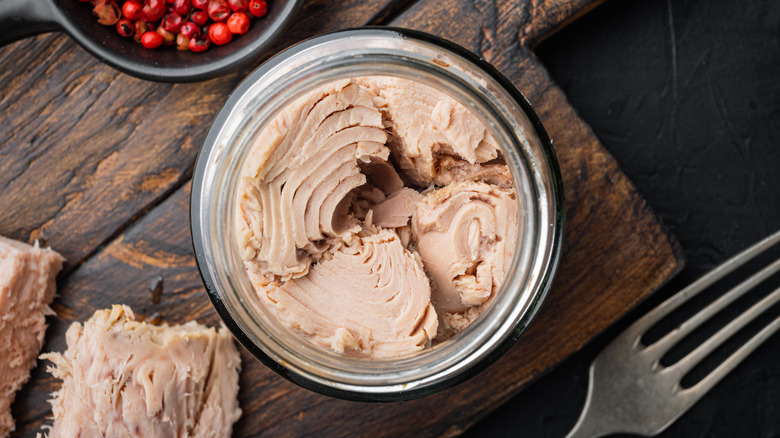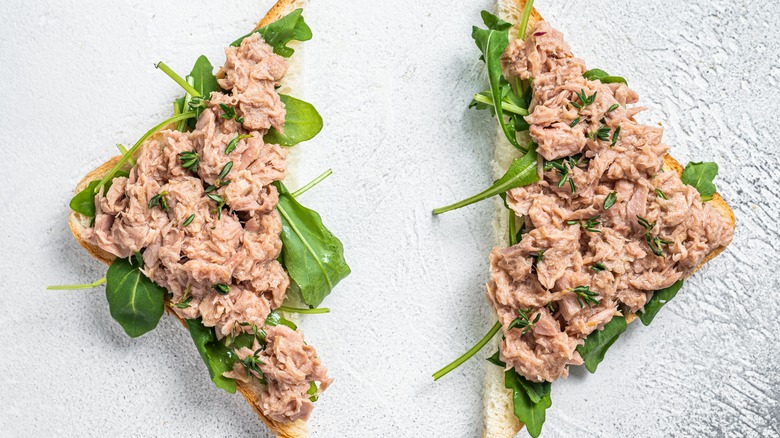Is Tuna Cooked Before Being Canned?
A go-to for home cooks due to its versatility, widespread availability, and relatively affordable price point, canned tuna is something likely to be sitting on your pantry shelf at this very moment. In fact, according to the National Fisheries Institute, it's estimated people living in the U.S. eat approximately 1 billion pounds of canned and pouched tuna per year and that around 40% of people eat a meal containing canned tuna at least twice each month. With the use of canned tuna being so common, questions about the process used by tuna purveyors to cook and can their catch are likely to occasionally spring to mind while mixing up a tasty tuna salad, comforting tuna melt, or protein-packed pasta.
You've likely been using it straight out of the can for years, but at exactly what stage of the canning process, if at all, is canned tuna actually cooked?
First baked, then canned
According to a report from Proficient Market Insights, Bumble Bee was among the top three canned tuna companies in 2022, making it a good place to start when looking for information on the canning process. As outlined by Bumble Bee, the first step is actually to cook the fish. Whole tuna is first baked, which the seafood company explains makes the process of removing the skin and bones a lot easier. Once the tuna has been fully cooked, the fish is moved to a room until it is cool enough to handle and then skinned, deboned, and, ultimately, canned.
There is some variation between manufacturers: Canned fish brand Arroyabe notes in the description of its canning process that it first cuts the fish into sections before cooking. While Bumblee Bee uses frozen tuna that it defrosts before baking, Arroyabe uses fresh.
Regardless of whether the fish is frozen before being cooked or sliced into pieces instead of baked whole, the first step in the tuna canning process appears to almost universally be to cook it. So if you're looking for an easy meal — no oven, stovetop, or microwave required — you can rest assured that each time you crack open a can of tuna it's been cooked and is ready to eat straight out of the can.

